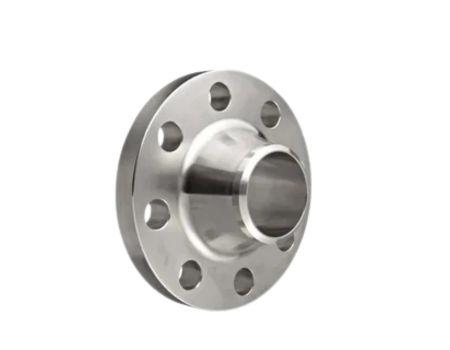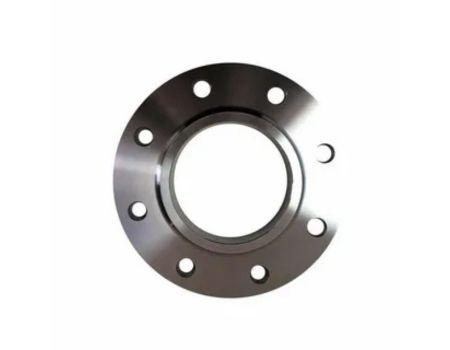Ss Weld Neck Flange
Built with a tapered hub, SS weld neck flanges are ideal for high stress applications. They offer superior fatigue resistance and are commonly used in pressure vessels and heat exchangers.
Minimum Order : 50 piece
Customization as per requiments
| Flanges Types | Slip On, Weld Neck, Long Weld Neck, Threaded, Blind, Companion, Lap Joint |
| Class | 150 Lbs, 300 Lbs, 600 Lbs, 900 Lbs, 1500 Lbs, 2500 Lbs Asa 150, Asa 300, Pn 6, 10, 16, 25, 40, 64, 100, 160 |
| Size | 1/2″ (15 Nb), 48″ (1200nb) Dn10~dn5000 |
| Type | Raised Face (rf), Flat Face (ff), Ring Type Joint (rtj), Lap Joint Face (ljf), Large Male Female (lmf), Small Male Female (smf), Large Tongue & Groove, Small Tongue, Groove |
Sagar Steel Corporation is a leading stainless steel flanges manufacturer with a broad product portfolio of high-quality flanges fabricated of the best materials like stainless steel, carbon steel, alloy steel, and galvanized steel. These flanges are designed to satisfy international and national standards, which are also strong, have dimension accuracy, and resist corrosion. They are very important in the piping systems in industries, especially in making safe connections between pipes, valves, and pumps, among other devices. We are a pioneer in our flanges, and our applications are in construction, petrochemical, marine, oil and gas, agriculture, and power generation industries, and they are accessible to work under high-pressure and high-temperature conditions. We also provide different types of Flanges that satisfy other industrial needs.
We have different forms of our flanges, such as weld neck, slip-on, blind, threaded, and socket weld, and can be tailored to suit your particular project requirements. They are intended to be purchased in large quantities since they are designed to be durable and can integrate easily into complicated systems. These flanges are offered on major B2B portals where they offer confidence in quality, accurate dimensions, and a good delivery schedule, which guarantees long service in the challenging industrial market.

Built with a tapered hub, SS weld neck flanges are ideal for high stress applications. They offer superior fatigue resistance and are commonly used in pressure vessels and heat exchangers.

These flanges are easy to align and weld, offering cost effective connections for low pressure systems. Widely used in water supply, HVAC, and structural pipelines.
What makes stainless steel flanges a preferred choice over carbon steel in corrosive environments?
Stainless steel flanges offer superior corrosion resistance, especially in environments exposed to moisture, chemicals, or saline water. Grades like SS 304 and SS 316 resist rust and oxidation far better than carbon steel. This leads to reduced maintenance and longer service life. As a result, they are ideal for marine, chemical, and food-grade applications.
How do stainless steel flanges contribute to system reliability in high-pressure pipelines?
Stainless steel flanges are designed to handle extreme pressure and temperature variations without deforming or leaking. Weld neck and socket weld types, in particular, ensure strong mechanical joints. This reliability reduces downtime and enhances system integrity in oil & gas, steam lines, and industrial boilers. Their consistent performance makes them crucial for mission-critical systems.
Are stainless steel flanges available with different face types, and why does it matter?
Yes, they come in raised face (RF), flat face (FF), and ring-type joint (RTJ) designs. Each face type serves specific sealing requirements. For example, RTJ flanges are used in high-pressure systems where leak-proof performance is critical. Choosing the correct face type enhances safety, reduces the risk of joint failure, and ensures proper gasket compatibility.
Get Quote Instantly
India
Mumbai
Lucknow
Nashik
Pune
Rajkot
Moradabad
Angul
Rudrapur
Hosdurg
Gandhinagar
Rajahmundry
Durgapur
Bharuch
Panipat

Sugar

Oil And Gas Industries

Paper Mill

Power Plant

Bridge And Building

Aerospace Industries

Automobile Industry

Electrical Industry

Defense Industry

Construction & Fabrications

Ring Man Units

Railways

Gasket Industry

Pharmaceuticals Industry
Get Quote Instantly